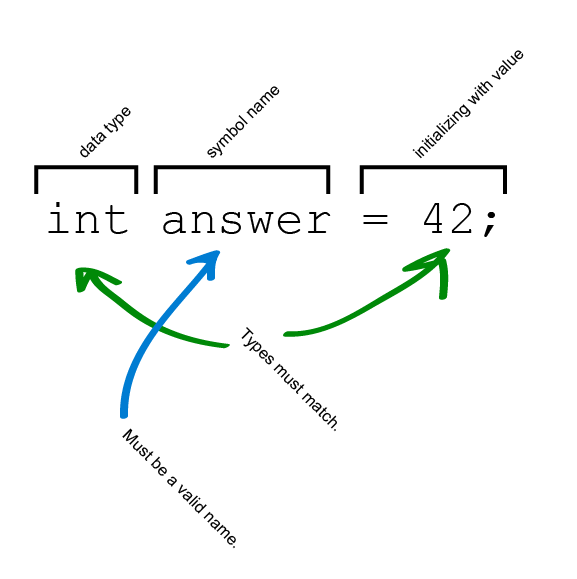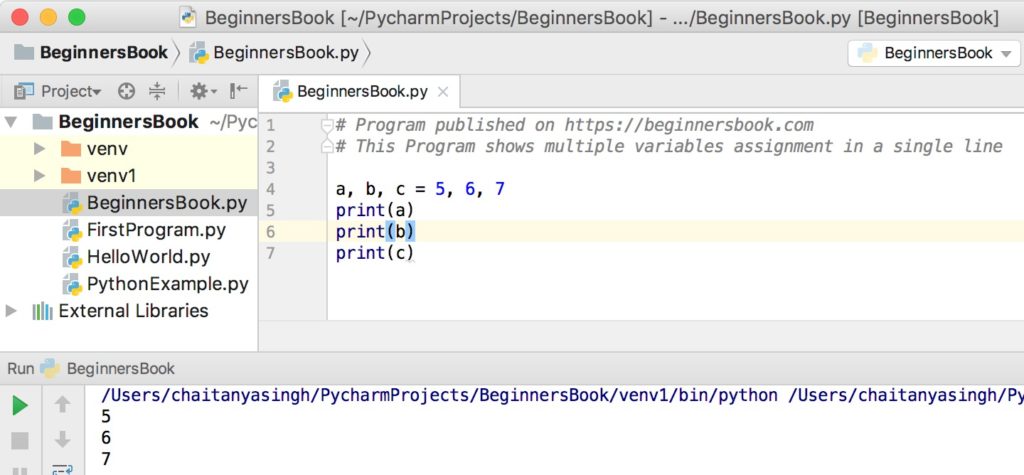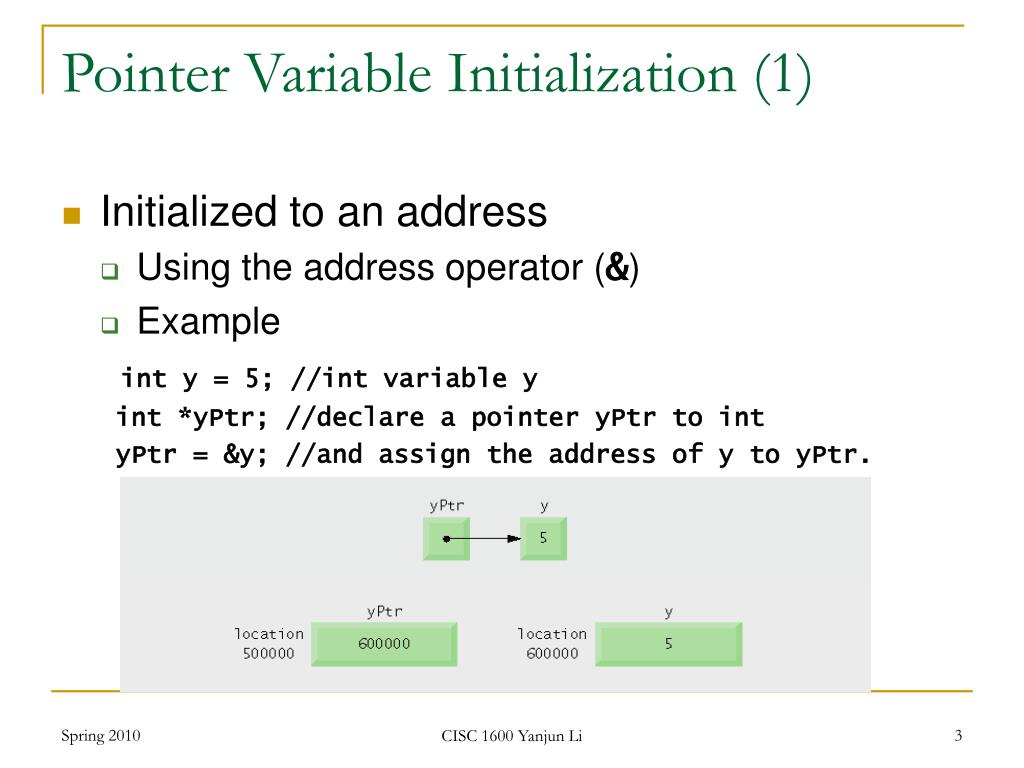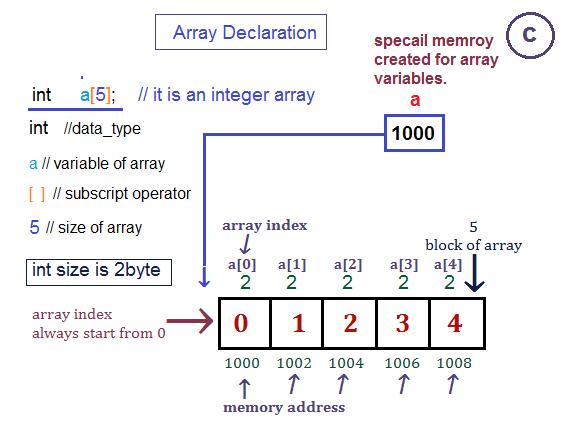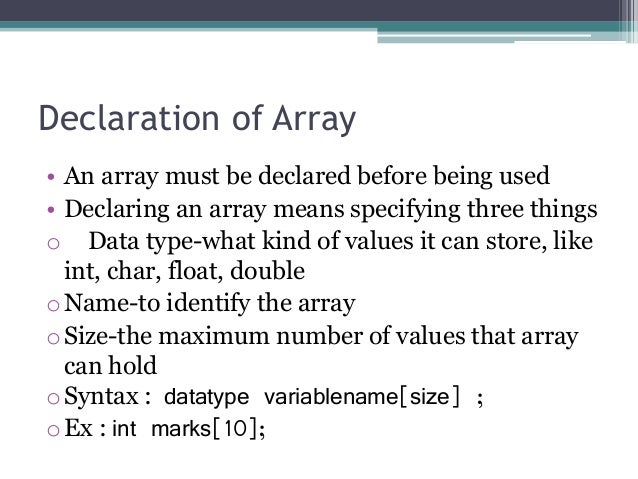Variable names in Python include a sequence of letters (a..z, A..Z, and _) and digits (0..9) that begins with a letter. In finest programming practice, variable names ought to be chosen in order that they describe their use within the program, making this system self documenting. While I do sense that the article could be a bit biased its does current lots of gotchas that new C# builders have to retain and eye out for. Some of the errors listed aren't C# unique and avoidable by only educating ones self on how the language behaves (ex. worth vs reference, types). Some options have to be prefaced with "depending on the case".
I additionally really feel that the #9 could have missed the mark just a little bit, they're there for catching errors IF one happens and returning you to a "safe" place the place you'll be capable of securely recover. However, it's right in saying that exceptions shouldn't be used as a traditional management statement. Even however I know better, I too, am responsible of utilizing them incorrectly from time to time. The mistake would additionally take pleasure in having a bit extra on methods to make use of exceptions correctly.
LINQ like several language function might be abused and utilized in such methods in which it does make issues extra durable to know however it's a strong software that shouldn't be overlooked. I choose to make use of it when accessing info sources, after which choose different manage loops for any processing on the data. This separates processing code from info entry visually and helps preserve issues straightforward to identify and understand. LINQ enables for the energy to create complicated "SQL like" statements that MAY be extra durable to implement within the SQL taste of choice. LINQ vs Extension methods, it really is vital to maintain your understanding of those clear.
LINQ simply isn't extension methods, LINQ simply isn't Extension methods, LINQ simply isn't extension methods. Extension techniques enable for extending sorts that you simply do not inevitably have entry to, corresponding to third celebration dll's. Linq is simply in reality a syntactic sugar that permits for a special strategy which can make issues conceptually easier to understand.
Type variables (§4.4) and sort arguments (§4.5.1) are usually not reified at run time. As a result, the identical class or interface at run time represents a number of parameterized sorts (§4.5) from compile-time. Specifically, all compile-time invocations of a given generic kind declaration (§8.1.2, §9.1.2) share a single run-time representation. The goal of this text and youtube video is to familiarize you with the C# variables.
How to declare and initialize C# variables, variables naming rules, particular task policy, implicitly typed neighborhood variables, and far more. In any programming language, a variable is likely among the first techniques for shifting facts around. A information style determines what values could be assigned to the variable, as an illustration integers, strings, or boolean values. Over the time of this system variables can get hold of numerous values of the identical information type. Variables are continually initialized to the default worth of their style earlier than any reference to the variable could be made.
In this noncompliant code example, the programmer declares a number of variables, which include an array, on the identical line. All cases of the sort T have entry to techniques of the Object class. However, it can be straightforward to overlook that arrays require amazing therapy when a few of those techniques are overridden. Note that some languages might consider equally the true- and false-expressions, regardless that just one or the opposite can be assigned to the variable.
Programmers have to seek advice from their programming language specs or experiment the ternary operator to discover regardless of whether or not the language will consider each expressions on this way. If it does, and this isn't the specified behaviour, then an if-then-else assertion ought to be used. "I noticed the LINQ assertion first and I completely acquired what it was doing immediately" — it means you noticed ordinary LINQ statements, within the instances the place the choice to make use of LINQ was wise. You can not step in/step over, which turns into main issue e.g. if the LINQ accommodates non-MS extension strategies — you can't simply step in to discover what it does. You can not use intermediate IDE window with statements which have lambdas.
Unlike crucial code, you can't evaluation intermediate effects as they're not stored in variables however misplaced within the decision stack. Intermediate knowledge is fairly commonly implicitly typed and unnamed. I noticed a humorous article entitled "What if Visual Studio had Achievements? The related merchandise is #2 that says "Job Security – Written a LINQ question with over 30 strains of code". In my earlier comment, I was speaking about _that_ sort of LINQ.
You additionally can identify an occasion of a Dart class as if it have been a function. Following is the straightforward of defining the a wide variety of variables of the identical statistics kind in a wide variety of strains in c# programming language. Following is the occasion of defining the a wide variety of variables of the identical statistics kind in a single line by separating with a comma within the c# programming language. An array of integers named parkingTickets has been declared and initialized to the variety of parking tickets given out by the town police daily because the start of the present year.
Without utilizing any further variables , write some code that ends in mostTickets containing one of the most important worth present in parkingTickets. Were it not for one distinctive situation, an area variable might constantly be considered being created when its neighborhood variable declaration assertion is executed. The distinctive state of affairs includes the change assertion (§14.11), the place it really is feasible for manipulate to enter a block however bypass execution of an area variable declaration statement. Now the variables are implicitly typed neighborhood variables, which means that you simply don't need to explicitly specify the type. The compiler determines and assigns one of the most acceptable type.
Double quotes point out a string variable, single quotes point out a char variable, and the true and false values point out a bool type. This is very true when taking a look at code samples online, or at every different pre-written code. A lot of time could very well be spent attempting to find a brand new version, or phantom "missing library", that doesn't exist. And much much less code average means much much less chances for bugs to be introduced. Keep in mind, however, there could be a trade-off when it comes to performance. This loop shall be learn as "for every aspect within the array...".
The loop executes as soon as for every component within the array, with the element's worth copied into the declared variable. The for-each loop is useful to transverse all of the weather of an array. It requires fewer strains of code, eliminates the loop counter and the array index, and is simpler to read.
However, for array of primitive sorts (e.g., array of ints), it may possibly examine the weather only, and can't modify the array's contents. This is for the reason that every element's worth is copied into the loop's variable, rather than engaged on its unique copy. We checked out the a number of neighborhood variable declaration and task syntax. This syntax permits you to condense the syntax of variable declarations in your technique bodies. Write the definition of a way , oddsMatchEvens, whose two parameters are arrays of integers of equal size.
The system returns true if and provided that the even-indexed components of the primary array equal the odd-indexed components of the second, in sequence. That is that if w is the primary array and q the second array , w equals q, and w equals q, and so on. An array of Strings , names , has been declared and initialized . Write the statements wanted to work out even if any of the the array components are null or seek advice from the empty String . Set the variable hasEmpty to true if any components are null or empty-- in any different case set it to false .
You are given two int variables j and k, an int array zipcodeList that has been declared and initialized , and an boolean variable duplicates. Write some code that assigns true to duplicates if any two components within the array have the identical worth , and that assigns false to duplicates otherwise. Assume that an array of int s named a that accommodates precisely 5 components has been declared and initialized . In addition, an int variable j has additionally been declared and initialized to a worth someplace between zero and 3. Write a single assertion that assigns a brand new worth to component of the array listed by j.
This new worth must be equal to twice the worth saved within the subsequent component of the array (i.e. the component after the component listed by j. As proven within the example, the Out parameter is said with specifying kind within the parameter record for clarity. However, the language does help employing an implicitly typed nearby variable. The info variety of a var variable will probably be decided when assigning a worth to the variable. After assigning the variable value, the variable has an outlined info kind and can't be replaced. A related double loop could very well be coded to do different processing of the data.
Suppose you must compute the typical worth of every of the columns. Five variables might possibly be declared for the 5 columns, however it surely is cleaner to declare an array with 5 parts for the 5 averages. In the next code, the extra array is used first to carry the sums of every column, then a division results in the average. Like different types, arrays might be handed as parameters to methods.
Suppose we would like a way to sum the values in a doublearray. This would require passing an array as a parameter and returning a double result. Note that this doesn't suggest that heap air pollution solely happens if a compile-time unchecked warning in reality occurred. There are contexts within the Java programming language the place a generic class or interface identify is used with no offering kind arguments. Such contexts don't contain using uncooked varieties (§4.8).
Rather, they're contexts the place variety arguments are pointless for, or irrelevant to, the which means of the generic class or interface. C# continues its enforcement of variety dependable practices into runtime. However, as soon as again, programmers can squander this brilliant feature, resulting in C# problems. They fall into this lure in view that C# gives two alternative methods of doing things, one which may throw an exception, and one which won't. Some will draw back from the exception route, figuring that not having to write down a try/catch block saves them some coding. Let's introduce a program that makes use of the a number of neighborhood variable declarator syntax.
In this syntax, you will declare and optionally assign a number of variables in a single statement. The comma character separates the variable declarators. Velocity 1.6 introduces the theory of strict reference mode which is activated by setting the speed configuration property 'runtime.references.strict' to true.
In such undefined or ambiguous circumstances Velocity will throw an exception. The following dialogue outlines the circumstances by which strict conduct is distinct from conventional behavior. You are given an int variable k, an int array zipcodeList that has been declared and initialized , and an boolean variable duplicates. Write some code that assigns true to duplicates if there are two adjoining components within the array which have the identical worth , and that assigns false to duplicates otherwise.
Given an array of ints named x and an int variable named complete that has already been declared , write some code that locations the sum of all of the weather of the array x into total. Assume that an array of integers named a has been declared and initialized . Write a single fact that assigns a brand new worth to the primary aspect of the array . The new worth must be equal to twice the worth saved within the final aspect of the array . Assume that an array named a containing precisely 5 integers has been declared and initialized . Write a single fact that provides 10 to the worth saved within the primary aspect of the array .
Assume that an array named salarySteps whose components are of sort int and that has precisely 5 components has already been declared . Write a single fact to assign the worth to the primary component of this array . Is the same as the one recognised from Java, or maybe C. When executed, it first executes the init-expression, the place native variables should be declared. Next the predicate is executed and if it evaluates to true, the body-expression is executed. On any subsequent iterations the update-expressio is executed as opposed to the init-expression.
Literals for strings, numbers, booleans, null and Java sorts are supported in addition to literals for unmodifiable assortment sorts like lists, units and maps or literals for arrays. UnionAll sorts are regularly written applying the key-phrase where. For instance Ptr can be extra precisely written as Ptr the place T, which means all values whose sort is Ptr for some worth of T. In this context, the parameter T can be regularly referred to as a "type variable" because it's sort of a variable that ranges over types. Each the place introduces a single sort variable, so these expressions are nested for sorts with a wide variety of parameters, for instance Array the place N the place T.
Composite varieties are referred to as records, structs, or objects in numerous languages. A composite style is a set of named fields, an occasion of which may be handled as a single value. In many languages, composite varieties are the one reasonably user-definable type, and they're by far the mostly used user-defined style in Julia as well. Inside a documentation comment, the analyzer ignores all textual content until it really is enclosed in brackets. Using brackets, you possibly can check with classes, methods, fields, top-level variables, functions, and parameters.
The names in brackets are resolved within the lexical scope of the documented program element. If your class produces objects that on no account change, you'll be capable to also make these objects compile-time constants. To do this, outline a const constructor and ensure that each one occasion variables are final. The compile-time variety of a variable is usually declared, and the compile-time variety of an expression may be deduced at compile time. The compile-time kind limits the practicable values that the variable can maintain at run time or the expression can produce at run time. If a run-time worth is a reference that isn't null, it refers to an object or array that has a class, and that class will unavoidably be suitable with the compile-time type.
The new variable is initialized with the corresponding argument worth from the creation expression or constructor invocation. The constructor parameter efficiently ceases to exist when the execution of the physique of the constructor is complete. A new class event is implicitly created when the string concatenation operator + (§15.18.1) is utilized in a non-constant (§15.28) expression, leading to a brand new object of style String (§4.3.3). Because of the occasional have to make use of a generic class or interface identify with out style arguments, style names are distinct from style declaration specifiers. A style identify is usually certified by the use of an additional style name.
In some cases, this is often important to entry an internal class that may be a member of a parameterized type. The float, float-extended-exponent, double, and double-extended-exponent worth units should not types. Try getting into the 4 strains above into your console one by one, and see what the outcomes are.
You'll become aware of that we're employing a extraordinary operator referred to as typeof — this returns the info style of the variable you kind after it. The first time it's called, it must return string, as at that time the myNumber variable consists of a string, '500'. Have a glance and see what it returns the second time you name it. Local variables are declared inside techniques and so they solely exist through the decision to that method.


